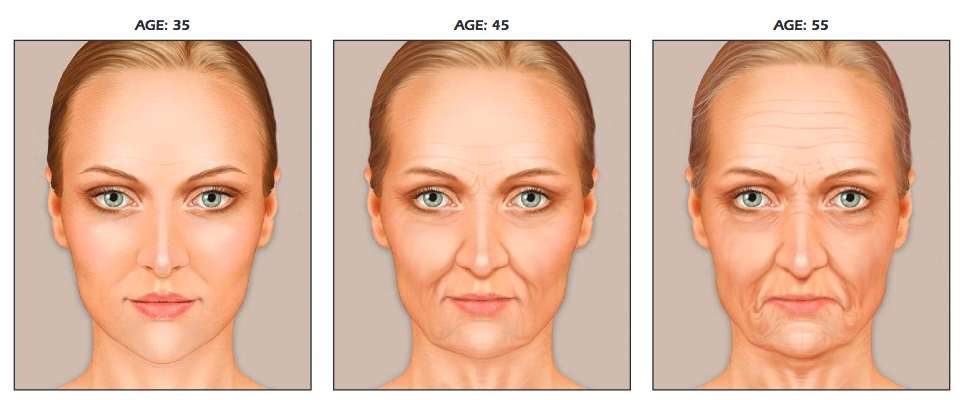Looking
at gorgeous Sophia Loren’s pictures through the last few decades, we get a sense
of time travel with a front row seat witnessing a beautiful youthful face
change with age. Facial aging is a fascinatingly intricate process, but our
vision mostly is limited to what’s happening on the surface of the skin. Taking
a closer anatomical look, scientists have discovered that a lot of major
changes are happening underneath the skin too. To better understand how a visage
plumped with youth, transforms into a creased and sagged poster child of age
lets indulge in anatomy 101 to see closely what’s really happening underneath the
skin with the passage of time.
Facial
aging process begins second decade of life, with surface and subsurface
structural changes in multiple tissue layers —including skin, fat, muscle and
bone. All layers age interdependently, contributing to the overall facial
appearance that keeps on changing with age.
Journey Of Our Skin Through
Time: As we
age our skin goes through several changes —on the surface the skin becomes more
rough and pigmented as the epidermal renewal cycle become less efficient. Past
second decade of life, skin collagen remodeling and replenishing processes begin
to slow down, with progressive loss in collagen skin becomes thinner and hence
more likely to wrinkle & sag. As the skin becomes progressively drier,
thinner and
less
elastic with age along with daily wear and tear going unchecked skin begins to
wrinkle, sag and look lusterless.
Fat & Bone Changes With
Aging: A
youthful plump face has the right amount of facial fat in all the right places.
Redistribution, accumulation, and atrophy of fat with age, leads to facial shape
changes and sagging. Some areas lose fat e.g. the forehead, temples and upper cheeks.
Other areas gain fat e.g. neck, lower face and jaw. Modification of the fat
pads leads to contour deficiencies. In addition, the areas of fat tend to
become farther apart. Instead of a smooth, almost continuous layer, the fat
pads appear as separate structures.
Age Proofing The Visage — Modern
Medicine To The Rescue
Facial
rejuvenation treatments can be classified in three categories:
Resurfacing Options —Skin peeling techniques can
be used to modify the surface of the skin. Peeling the suface can correct the
effects of photoaging, which includes correction of fine lines, irregular
pigmentation and blemishes. Common skin resurfacing techniques include:
- Chemical peels
- Micro-dermabrasion
- Laser resurfacing
Injectables —Injectables include a broad
range of substances, which can be administered by injection into the skin, fat
or muscles. Their main usage is for the treatment of lines, wrinkles and folds,
as well as hollowing and volume loss. Three of the most common types include:
- Neurotoxins
- Traditional fillers
- Collagen stimulators
Surgery —Surgery includes a wide
range of procedures from lifts to liposuction to fat transfer. These treatments
can address a range of desired
outcomes. Three of the most popular surgeries are:
- Liposuction
- Facelift
- Fat transfer






No comments:
Post a Comment